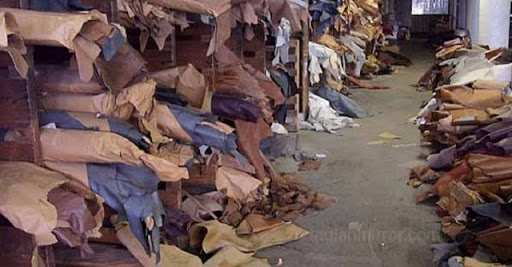ZimTrade eyes 40pc growth in leather exports by 2030
Zimbabwe is looking to grow its leather products exports to 40 percent of annual leather sector shipments by 2030, as part of efforts to diversify the country’s export basket, trade promotion body ZimTrade says.
This will be achieved through the national leather sector strategy (2021-2030), launched in April 2021, to guide growth of leather exports and their value-addition.
Broadly, the initiative seeks to enhance the application of sustainable production technologies in the leather sector to promote production and leather exports currently at US$30 million.
The National Development Strategy (NDS1) also identified the leather sector as one of the critical value chains and low-hanging fruits for a nippy turnaround of the local economy.
Finance and Economic Development Minister Mthuli Ncube, through the 2022 National Budget Statement, set aside US$10 million for a revolving fund to support the sector for value chain enhancement, including equipment replacement and retooling.
The contribution of hides and skins value chain towards local economic growth is potentially high, which calls for the right interventions that include embracing value addition initiatives.
ZimTrade says Zimbabwe’s leather industry is one of the emerging sub-sectors that can spur economic growth if the value chain is fully developed and capacitated.
“In the drive to ensure that exports remain pivotal to the economy, the priority in the country’s national development agenda is value addition and beneficiation of products currently being exported as primary goods,” said ZimTrade.
“Despite the decline in 2017, the exports remained above US$30 million while the imports have been on a downward trend from the peak of US$16,9 million recorded in 2018 to US$9,4 million in 2020.”
Roughly, 96 percent of Zimbabwe’s leather exports are raw hides and skins, which prejudices the country since the products fetch low on global markets compared to value-added leather products.
In that regard, Zimbabwe is losing export value through unprocessed exports and jobs that could be created through value addition of the leather products.
Kenya is one of the regional powerhouses when it comes to exports of value-added leather products.
The east African country’s leather exports consist mainly of footwear with outer soles (59 percent of the sector’s exports) while waterproof footwear exports make up 24 percent of the sector’s shipments.
The Government has pledged to recapitalise the local leather and footwear sub-sector to increase its capacity utilisation and boost exports through value-added products such as finished leather footwear and other products.
Zimbabwe’s footwear industry is on a recovery path after taking a battering during the economic turbulence between 2001-2008.
At its peak in the 1990s, the leather sector produced 8 million pairs of leather shoes but most of the shoe manufacturing factories have since shut down.
The sector was prioritised for development in both the National Trade Policy of 2012- 2016 and the Industrial Development Policy spanning 2012-2016.
The NDS1 also identified the leather sector as one of the key-value chains targeted by the Government for development, given its potential as a long hanging fruit.
Hides and skins are a by-product of the meat and dairy supply chains therefore hides and skins are not produced primarily as raw materials in the leather industry.-The Herald











